If you have hard water, you really should have a water softener, that’s just common sense. What you don’t need is unexpected or unneeded service calls once you have your water softener. No water softener will last forever, but why fix a water softener that isn’t broken.
A standard water softener treating water that contains a high level of iron may require regular maintenance due to iron build-up on the internal parts of the control valve. More advanced water softeners use water that has already had the iron removed and therefore they need less regular service.
A correctly sized water softener that has been installed and set properly will automatically operate as needed with minimal maintenance required, but there can be situations when a water softener would need regular maintenance.
Why would a water softener need regular maintenance?
Iron in your water may lead to your water softener needing regular maintenance.
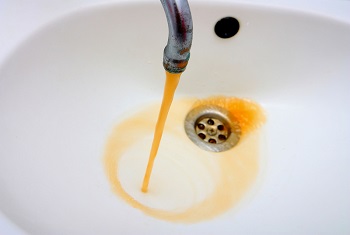
A water softener will not only soften your hard water but will remove iron in your water as well.
Low levels of iron in your water can easily be removed by your water softener and not cause any issues with its performance, but higher amounts of iron can clog internal parts that will require some regular attention.
Untreated water used to dissolve salt in a water softener brine tank will have hardness in it and possibly contain iron.
When this untreated water goes through the water softener valve, it can leave behind iron deposits and may have debris in it that can clog your water softener valve.
Many water softeners that are treating water with a significant amount of iron in it will develop a coating of the iron inside of the softeners’ control valve.
This iron build-up can clog injectors which allow the system to draw the brine solution from the salt tank that it needs to regenerate its softening resin.
If the water softener cannot draw the brine solution from the salt tank, it will not be able to remove the iron and hardness from the inside of its tank. If it can’t remove the iron and hardness from inside of its tank, it can’t remove any more from the water.
Fortunately, water softeners are designed to make these injectors easily accessible.
They are usually behind a cap with a few screws on it on the side or top of the system, and can often be removed, cleaned, and replaced with minimal difficulty.
Sediment in the water can clog internal parts of your water softener which can mean regular maintenance is required.
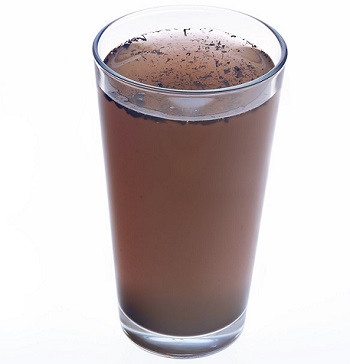
If you receive your water from a well, you may very well get some sediment coming in from it that can get inside of your water softener’s control valve and cause it to malfunction.
An undersized water softener will have to work harder, so it may require more maintenance.
Each time your water softener needs to regenerate, it needs to draw the brine solution from its brine tank.
If the brine contains sediment, the sediment can clog injectors and screens inside the water softener control valve which could lead to you needing to service your water softener on a regular basis.
Most water softeners use untreated water to dissolve the salt that they need in order to clean the hardness from the water softener resin that it has removed from your water.
A properly sized water softener will regenerate often enough to maintain a constant supply of softened water but not have to regenerate too often which can cause build-up inside the valve of the system sooner than it should.
Not only will this frequent build-up clog part inside the softeners valve, but this build-up can also cause extra wear and tear on the water softeners moving parts.
A water softener is a mechanical piece of equipment just like your vehicle or heating and air conditioning system. The cleaner it is kept, the smoother it operates. The smoother your water softener operates, the longer it will operate without the need for service.
How would I know that my water softener needs regular service?
Of course, noticing that your water feels different than normal is a sign that something is not working quite right with your water softener, but even if your water seems ok, there are a few things to check for.
Is your water softener beeping?

Many digital water softeners can actually let you know that it needs maintenance by sounding an audible alarm.
This beeping is most likely only an indication that the water softener has detected something that has happened that may affect its ability to properly regenerate its water softening resin bed.
Before calling a professional, I recommend checking a series of things that you may be able to take care of yourself. First of all, check your salt tank to see if you are out of salt.
Second, check that the clock on your water softener is set to the correct time. If it isn’t, you may have had a brief power outage that has triggered your water softener to alarm you.
You should be able to reset your clock quite easily, and this may be the only problem that is causing your system to alarm.
If you find that there seems to be plenty of salt in your brine tank, and your water softeners clock is correct, check out my article on Why Is My Water Softener Beeping?.
Is the water in your salt tank higher than you remember it being?
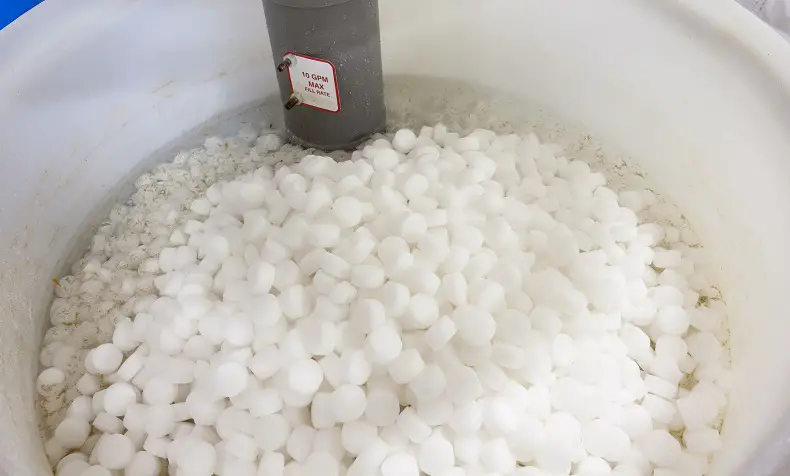
When you notice that your water softener’s salt tank has more water in it than usual, this is often a sign that the system has not been using a full dose of brine solution.
When a water softener’s injector/venturi gets clogged or there is a blockage it will draw the brine solution slower than it should, and may not draw all of the solutions out.
Then when the water softener goes to refill the tank, it will add the same amount as always, but since there was water left over, the amount of water in the tank will be higher than before.
Are you noticing white spots on your glassware or faucets?
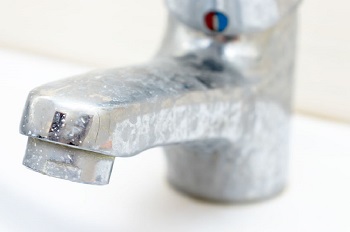
This is a clear indication that your water softener is not providing you with soft water at all times.
This could mean that your water hardness has changed, but most likely it means that your water softener is not thoroughly removing the hardness from its tank during regeneration.
What kind of regular maintenance is done to a water softener?
For the most part, servicing a water softener involves the cleaning of a venturi that draws the brine solution from the water softener’s salt tank and a screen that stops debris from getting into the venturi.
There are little things unique to different water softeners that may get checked if you are having problems with your system, but having a clean, working venturi is the most important function for the water softener to operate correctly.
When the venturi gets clogged, it can no longer draw the brine solution from the salt tank and therefore it can not clean the existing hardness from inside of its tank. If the system can’t remove the hardness from its tank it can not continue to remove more hardness from your water.
Can I do regular maintenance on my water softener myself?

If you feel comfortable bypassing your water softener for a while and carefully removing some parts from it for cleaning, you should have no problem doing the basic servicing that your water softener needs.
You will first have to bypass your water softener in order to depressurize it and be able to access the screen and injector inside it.
To remove the venturi and screen, you will have to locate the cap or cover that houses them. See your owner’s manual, and it should show the location and tell you how to remove the venturi and screen.
Cleaning the venturi is actually quite easy once you remove it from the water softener. I little “Iron cleaner” or liquid iron cleaner and an old toothbrush will clean your venturi and the screen that goes with it in no time.
Just brush the venturi and screen lightly with the cleaner until it appears clean, then let them soak in the cleaner for about 15 minutes. Rinse them thoroughly and replace them back into the water softener and that’s it.
Your water softeners’ pre-filter should be changed regularly.
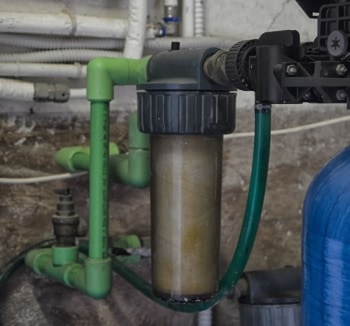
Not all homes need a sediment pre-filter to filter out dirt and sediment from the water but if you have an in-line whole house filter, be sure to change the filter cartridge as needed.
Using the correct filter cartridge for your particular water situation is very important. Not all filters are for all circumstances and a filter cartridge that is too fine may just be overkill and it may affect the water pressure in your home.
Don’t just grab the first filter that you see that looks like it should fit inside your filter housing, understand what filter is best for you and stick with the correct one.
Easily test your water yourself.
Part of regular maintenance of your water softener is knowing what the characteristics of your water are.
Testing water for things like hardness, Iron, ph, and TDS (Total Dissolved Solids) is actually very easy and a basic water test kit is very inexpensive and easy to use.
Don’t overfill your water softeners salt tank.
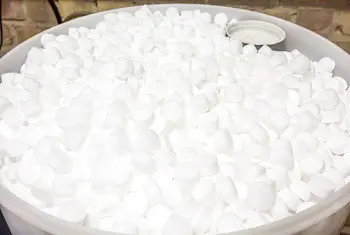
Filling a water softener’s salt tank right to the brim may sound like a great idea, but it can actually cause a problem where the salt will form an arch and not fall down into the tank as the salt beneath gets used.
This is called a salt bridge, and it can usually be easily avoided by not overfilling the water softeners’ salt tank.
My rule of thumb is to fill the tank when it is down to about 1/3 tank and to only fill it up to 3/4 full. Never fill your salt tank higher than the top of the brine float tube. That’s the white tube that goes up the side on the inside of the salt tank.
Keeping your salt level below the top of this tube will greatly decrease the chance of a salt bridge forming.
If you think that a salt bridge has formed because your water is hard even though your water softeners brine tank looks to be full of salt. See my article on How Do I Clear A Water Softener Salt Bridge?.
Check for salt mushing.
Salt mushing is when small pieces of undissolved salt and other particles that have been leftover in the brine tank, settle in the bottom of the tank.
Over time this fine mush can build up to the point where it blocks the brine from being drawn into the water softener and therefore denies the water softener enough brine solution to regenerate its softening resin.
This salt mush can become very dense and difficult to remove. Carefully chipping away at the build-up of this mush along with scooping out any loose chunks will allow you to clear it.
Water softeners designed for chlorinated water will need regular service. But not yearly!
Get the right water softener for your type of water supply.
Not all water softeners are created equal, and not all water softeners are designed to treat all types of water.
Many people think that water softeners are only needed when you have your own private well. Well, nothing could be farther from the truth.
Municipal water is still water that has been drawn from the ground and therefore it can contain minerals that will make it considered to be hard water.
Since the cost of softening water for an entire town or city would be incredibly high, the cost and responsibility of softening the water are left to the individual homeowner.
The problem with softening water that is supplied by a city or town is that it is more than likely treated with chlorine to ensure that it is safe for consumption.
Chlorine in the water not only smells and tastes funny, but it will also ruin your water softeners’ softening resin. This is why you must protect your water softener with a backwashing carbon filter to remove the chlorine from the water before it gets into the water softener.
A second choice for municipal water is a water softener that already has carbon in it to remove the chlorine.
These water softener, carbon combination systems work great but the carbon breaks down over time and has to be replaced.
This may take several years before the carbon needs replacing, but this is still a service that will have to be considered when choosing a water softener for your municipal water.
The more bells and whistles can mean more regular service.
With everyone wanting the latest and greatest technology nowadays, some water treatment system manufacturers have added extra filtering features, more electronic gadgets, and even smartphone and smart home interactive water treatment systems.
Most of these improvements are quite impressive and helpful, but they can also mean that the water treatment systems will need more servicing.
A very popular advancement in water treatment systems is the ability of the water treatment dealer to program the system to beep after a pre-determined amount of time to alert the homeowner to “call for service”.
I agree that in some cases this is a very helpful and beneficial feature, but many dealers will program it just to make the customer call for service that they really don’t need.
This service reminder feature is great for people that want to have the salt delivered to their home, or if they want to have their system checked on a regular basis for peace of mind.
I also like this service alert for people that have a problem with acidic water. Acidic water is often treated with a backwashing system that contains calcite which neutralizes the acid in water.
The calcite inside of the tank gradually dissolves as it neutralizes the acid and needs to be replenished on a regular basis.
If the calcite in the system runs too low, the water will remain acidic which can corrode copper piping and other metals used in your plumbing. It will also corrode your faucets and other water fixtures.
This is why having a service alarm to remind the homeowner to call to have their acid neutralizer replenished is a very good idea.
Less money upfront can lead to more maintenance down the road.
There are many different water softeners on the market today and they all look so much alike and claim to do the best job at treating your water issues. It can get very confusing!
One thing that you should make sure to understand about water treatment systems is that even if they look very much the same, they most certainly are not.
You may find a water softener for $300 at a big box store that looks just like the one that you saw at a water treatment shop for $1000 and think that the dealer is just trying to rip you off.
Well, that does happen I’m sure. But there are many water treatment systems that look very much the same on the surface, but underneath the pretty cover, one may have well-made metal parts and the other has nothing but poorly made plastic parts that were made overseas just to make an extra buck.
Buying one of these cheap versions of otherwise quality water softeners can lead to broken parts and poorly operating water treatment systems. These problems can lead to more service calls and high service call bills.
How often should a water softener be cleaned?
Technically, a water softener should never need to be cleaned.
When a water softener regenerates, it is using the salt from its brine tank to clean the water softening resin in its tank so that it can continue to remove more hardness from your water.
The only times that I recommend using a resin cleaner in your water softener is if it has been out of service for a long period of time (several months or more), or if it is treating water for iron as well as hardness.
If a water softener has been left for a long period of time without being regenerated, its resin may need several regenerations before it can properly remove hardness from the water as it should.
A dose of resin cleaner in the brine tank can speed up this process and get it back up and running correctly very soon.
If a water softener is attempting to remove iron from the water and is not working correctly, the iron can start to build up on the water softening resin. Once this happens, regular regeneration using brine may not remove all the iron from the resin.
Water softening resin cleaner can help to remove the built-up iron from the resin and bring it back to usable condition, prolonging the life of the resin.
Add a dose of resin bed cleaner once a year, to help avoid extra service calls.
Other than never letting your water softener run out of salt, there is no easier preventive medicine for a water softener than a quick dose of water softener resin cleaner once a year to help extend the life of the water softener resin and make service calls less frequent and often less expensive.
Simply pour about 4 ounces of water softener resin cleaner into your salt tank once a year to give the resin an extra thorough cleaning. If your water softener is also removing iron from your water, a dose twice a year certainly couldn’t hurt.
Use a surge protector for your water softener.

Since most water softeners on the market are electronic, electrical spikes and power outages can sometimes cause the water softener’s power supply to burn out, or its computer or digital displays to go out.
Putting a surge suppressor on the electrical outlet that your water softener is plugged into will help to protect your system from expensive electrical component replacements. Water softener computer boards can cost $75 or several hundred dollars depending on the type of water system that you own.
Check your owner’s manual to see if your digital water softener uses a battery to retain the programmed information that it needs to perform properly. If your power were to go out or you lose electricity for any reason, you could lose the pre-programmed hardness settings and regeneration cycle settings.
Losing the programmed information that the water softener needs mean a visit by your local water technician to come and reprogram the system.
Follow the instructions in your owner’s manual to change the battery in your water softener as recommended by the manufacturer.
Are there water softeners that never need maintenance?
Well, the person selling you the water softener may say that their system never needs any servicing, but in reality, any mechanical device with moving parts will at some point need some servicing or maintenance.
The truth is, most water softeners do not need as much service as the service company says that it does, but it will need more servicing than the salesman says it does.
Fewer water issues equal to less maintenance.
Naturally, the more treatment that your water requires will mean more treatment systems and therefore more regular service.
But if you do a little homework about your water and what it will take to make it the clean and pure water that you desire, you can eliminate getting extra equipment that you don’t need and keep the services down to a minimum.
Don’t let someone convince you that you need a water softener plus a separate iron removal system until you have researched how much iron can be removed by the water softener alone.
Many water softeners can remove very high amounts of iron as well as soften your water when sized correctly and programmed to do so.
Use high purity salt to keep your system clean.

Just like you don’t want to put anything that is not pure into your body, the same should go for your water softener.
Never use any salt that is not designed to be used in a water softener. Low purity salt can have many impurities and debris in it that can lodge inside of your system and lead to service calls that could have been prevented if cleaner salt had been used.
Whether you would like to use pellet salt, salt blocks, or salt crystals, you should look for salt that is 99% pure salt to avoid getting any unwanted debris entering your water treatment system.
If you choose to use pellet salt, you will notice a layer of dense mush accumulates over time at the bottom of the salt tank.
This is the remains of the binder that helps form the salt into pellets. It will not cause any harm, but it will need to be removed every so often in order to make room for the new salt.
What does in service mean on water softener?
This can confuse some people, simply because they see the word service.
The term “in-service” or simply “service” is often displayed on a water softener’s digital display or manual regeneration dial.
This refers to the system being in normal service mode. This is when the water is flowing through the softener and removing hardness from the water. You will see the system in this position most of the time as it will only go to another cycle when it needs to regenerate.
You also may see the word service on the water systems bypass. Just like the word service on the display of the system, this means that the system is in service for water to flow through it and treat your water.
How much does it cost to service a water softener?

Don’t be fooled by ads saying that they will service your water softener for just $49, or have your system checked for only $19.99. These are just sales tricks to get you to call for service and then they send you a salesman to try and sell you a new system.
Or sometimes you might actually get a service technician, but you will end up with a big bill after the technician has changed a bunch of parts that are “not included in the service special price”.
You can expect a basic service call to be at least $99 and as much as $200 just to show up at your door. That is just to check your water softener system and maybe test the water.
Ask about getting regular maintenance done on your system. This will often include some basic checks and cleaning of important parts. You should be able to get a flat rate price for this maintenance service and be prepared to pay anywhere from $150 and up for the service.
If you have multiple systems in your home for multiple issues with your water, ask about a discount for servicing all of your systems at once.
If they do not offer a discount like this, tell them that you only want to service what absolutely needs to be serviced. If they say that it all needs to be serviced without missing a beat, consider calling someone else.
Skip the service plans!
For the most part, I do not recommend getting any kind of service plan or service agreement for any kind of water treatment system.
If you check around and purchase a quality system, it should not need regular service and therefore not need a service plan.
Related Questions:
How long should a water softener last? This all depends on how hard the water softener will have to work to treat the water that you have. Simpler systems like the Fleck 5600, Autotrol, and Clack valves that only treat water for hardness can last 20 years or more in an average household.
But beware of manufacturers using a cheap version of one of these valves. Check to see if they are made with primarily metal parts and are sold by a reputable dealer.
Is it worth servicing an inexpensive water softener? If you are just experiencing occasional hard water and mild hardness staining, having your inexpensive water softener serviced could easily fix the problem.
But if your water softener has completely stopped working and is more than 10 years old, you will probably be better off just getting a new one as the cost of repairing it may be more than the cost of replacing it.
Ask your service company if they will credit the cost of a service call towards the purchase of a new system if the cost of repairs will be too high.


Orbit water softener has “catalytic carbon” that never needs changed. Therefore, they claim the unit comes with a lifetime warranty for service and repairs? Cost $4980.
Another brand Brita says it also is lifetime for service and warranty, cost $4990.
My water is 9 hard and Ph is 7.5 and it has chlorine in it. It is city water, but like most Florida water it is hard and loaded with iron.
What would you recommend for a 3B,2bath house with 2 outside bibs and a unit that must be placed outside? Thank you, Lee
Hello Lee and thank you for your question.
I have heard of companies that “Claim” that their carbon never needs to be changed but I have never found carbon that lasts forever.
Chlorine and iron can be removed by carbon but it does not remove hardness. Over time, carbon breaks down and will no longer be able to remove chlorine or iron from your water efficiently.
I would be HIGHLY skeptical about both of those systems as they sound too good to be true.
Check the fine print to see how long the carbon is guaranteed for as well as the mechanical parts of the system.
I would contact a few other companies to see what solutions they may have for you. A standard carbon system for chlorine or iron removal would cost much less than the price of either of those systems even if the carbon needs to be changed a few times during the system’s lifetime.
I would recommend getting a water softener as well as a carbon filter to handle the chlorine and iron as well as the hardness. A water softener will remove iron from your water also but you should use a carbon filter for the chlorine.
As far as installing the systems outside, I recommend some kind of shelter for the systems to protect them from the sun’s UV rays and the weather. Make sure that they will be in an area where there is no chance of them freezing.
I hope this was helpful.
Paul